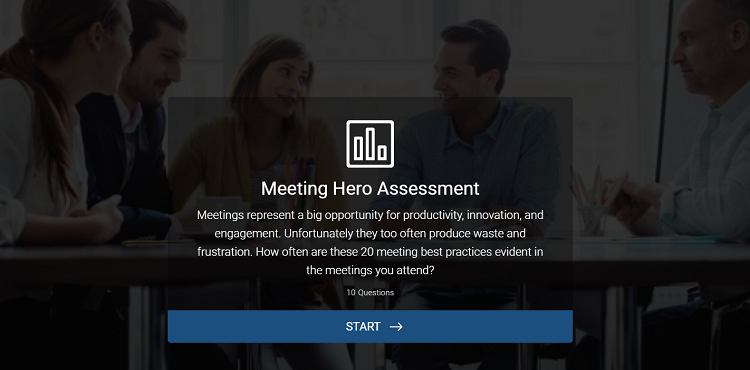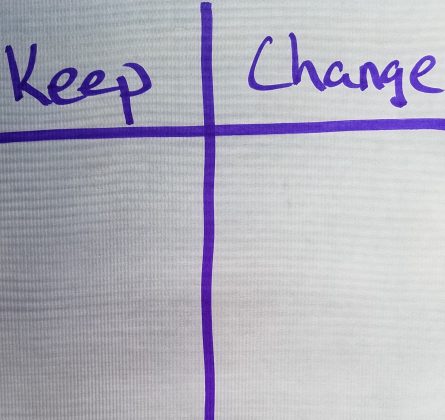Just because nobody complained to your face about the meeting you just led, doesn’t mean it went well. You’ll never get better at leading meetings if you don’t evaluate meetings.
There are two basic approaches to meeting evaluation:
- Self-assessment meeting evaluation
- Participant meeting evaluation
Self-assessment is an easy way to start
Assuming you have a good handle on what an effective meeting looks like, and if you have decent self-awareness; you’ll likely be able to evaluate meetings you’ve led.
This depends, of course, on you taking the time to do the meeting evaluation. Most of us are off to another meeting or have a full email inbox that needs our attention. Sadly, it’s rare to give past meetings a second thought.
Because facilitating meetings professionally is what I do, I almost always think about how the meeting went.
Sometimes I am confident the meeting went well. I know what went well and why. Participant feedback confirms my assessment.
At other times I’ve finished a meeting and immediately thought, Geez, that didn’t go as well as I would have hoped. And in the next few minutes several people approach me to excitedly proclaim that was one of the most productive meetings they’ve ever attended.
All I can think is that I’m glad I don’t go to their usual meetings.
Take this free self-assessment right now
This meeting assessment will help you determine the effectiveness of meetings you attend. You can use it to think about a single meeting, a repeating meeting, or even all the meetings you have attended in the recent past.

What do your meeting participants think?
The people in your meeting will have opinions. If the meeting was a waste of their time, they’ll certain be vocal about it…to other people.
It would be much better to find out what they think and put that information to use making future meetings better.
Here are four ways to quickly gather participant feedback about your meeting.
1. T-chart

Draw a line down the middle of a flip chart or a white board. On one half write the word “Keep” and on the other half the word “Change.”
Ask people to reflect on the meeting and yell out things they think should be kept or changed for the next meeting. You’ll need to encourage them to be candid about the problems they saw. This method is fast and usually yields an insight or two.
2. Letter grade

Each person gives the meeting a letter grade (A-F). After recording the grades, ask people for one or two reasons they graded the meeting as they did.
If letter grades give you flashbacks, use a scale similar to the one in the picture at the beginning of this article. Those hand-drawn emoticons can be quite useful in capturing people’s opinions.
3. Paper survey
Distribute a short survey card at the end of the meeting that asks people to comment directly on the evaluation questions.
You can combine a few quantitative questions with a couple open-ended questions. These could once again be something simple like keep and change, but now people don’t have to be so public in their opinions.
4. Electronic survey
Use a quick follow-up web-based survey. I’m a big fan of SurveyMonkey. This provides a way for the group to provide anonymous feedback.
These days, with many meetings happening remotely, it’s easy to implement the survey through Microsoft Teams or the team collaboration tool you used.
Set up a standard survey and just repeat it to your group after every meeting. If you make it easy and act on the what you learn, you will help raise your group’s willingness to provide feedback.
Improve your meetings
It doesn’t matter how you collect the information. It only matters that you do collect and use it. The insights gained can lead to better meetings. Don’t miss this opportunity to make yours better.
Want some help improving your meetings? Let’s talk about what you have going on.

